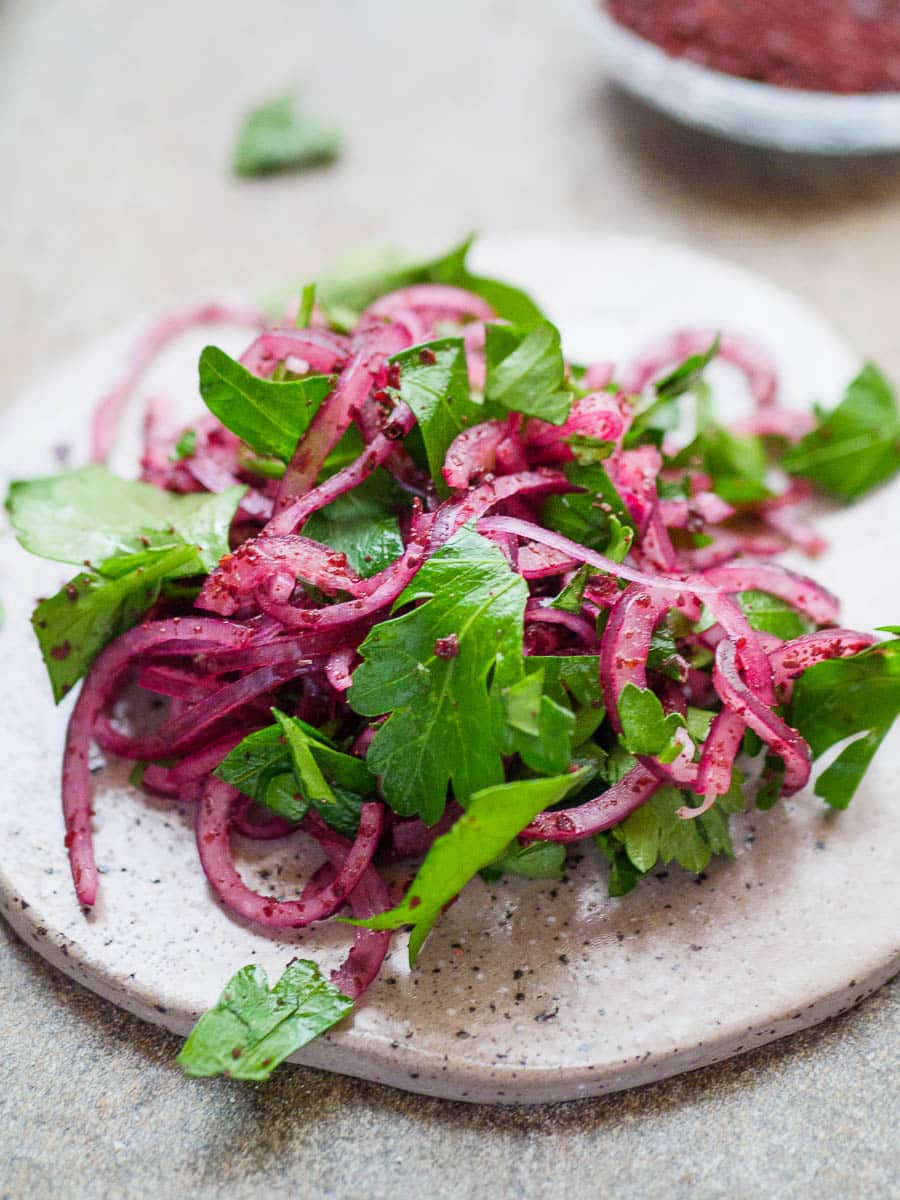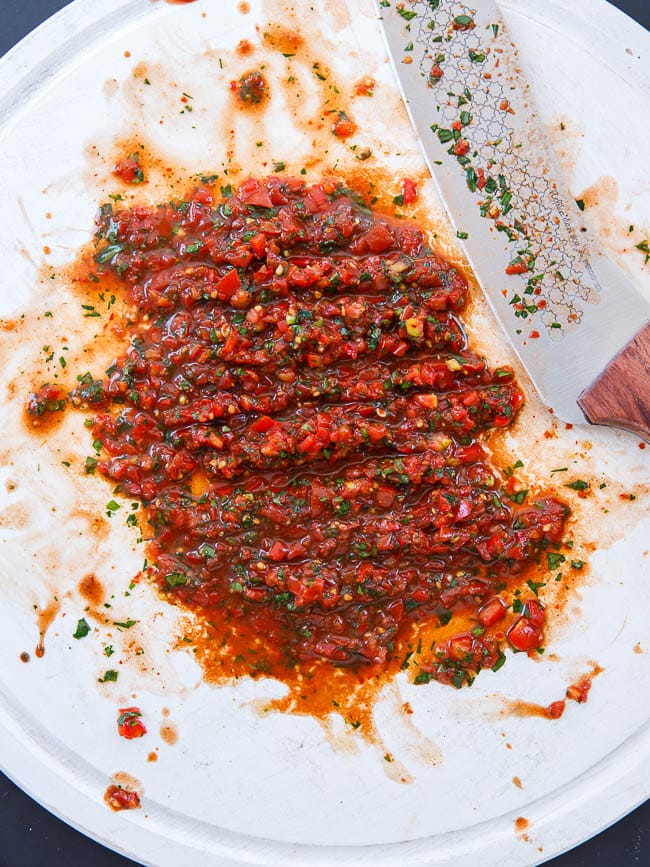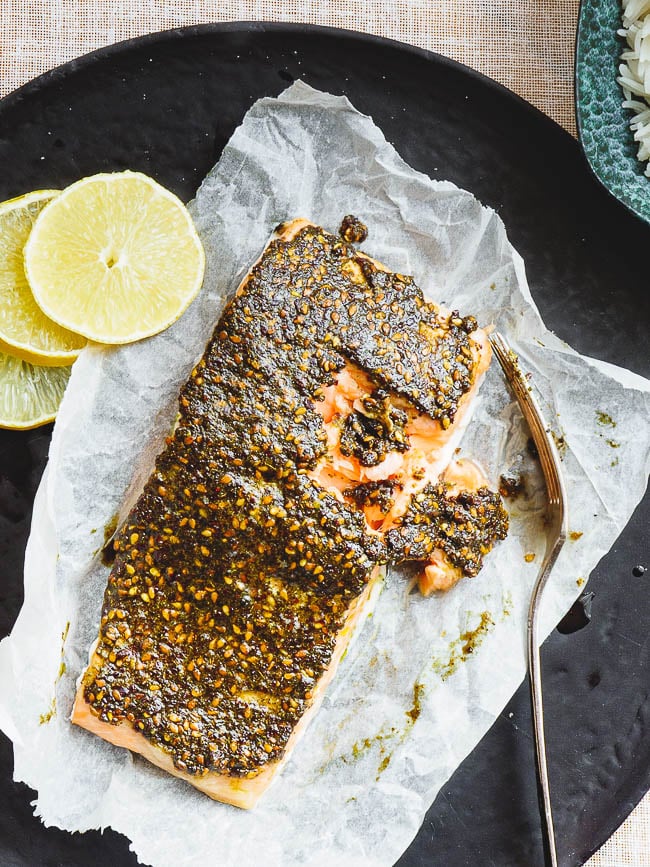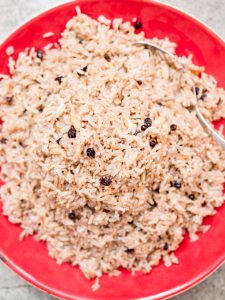There’s no kebab without sumac onions. This simple and delicious Turkish onion salad is the perfect accompaniment to rich foods like kebabs, liver or meatballs. Here’s how I make it.
Sumac onions is a tangy Turkish onion salad. Pungent from raw onion, zingy from sumac and with a grassy freshness from parsley, it provides the perfect balance to cut through the richness of meat dishes such as kebab or fried liver.
How to make sumac onions
Making Turkish style onion salad couldn’t be simpler. Yet, the final result is all about preparing your ingredients properly and the method used.
In Turkey, regular brown onions are usually used for this salad, but I prefer red onions. Red onions are slightly milder and less punchy, which is helpful when the onions are eaten raw.
The key here is to slice the onions thinly. This takes some of the edge off raw onion flavours, and allows the sumac and lemon juice to balance the dish. In many ways, this is what makes it taste like a salad and not sliced raw onion!
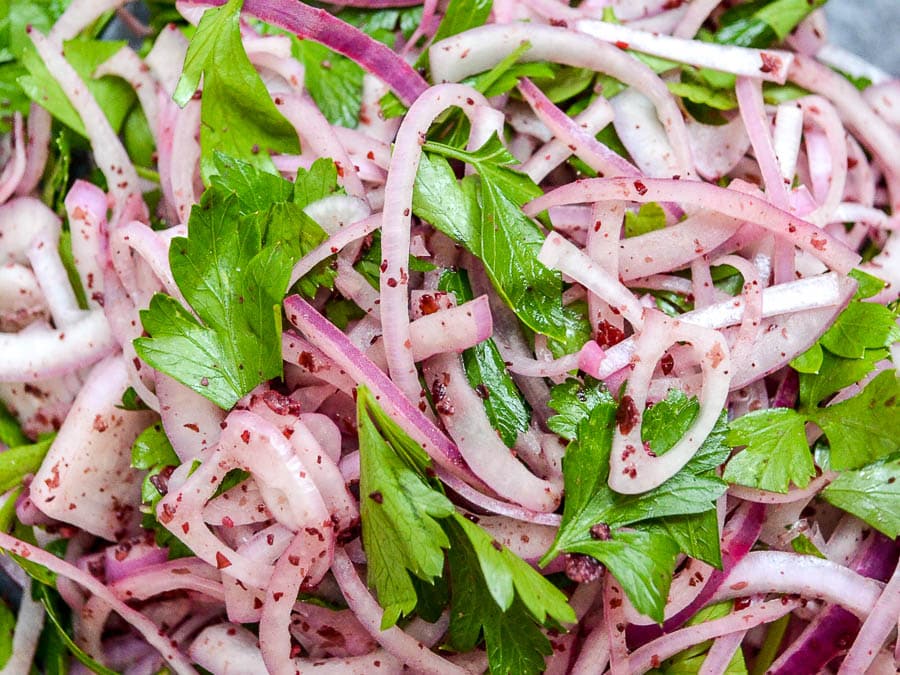
The second important point is what you do with the onions after slicing. If you like the texture and pungency of raw onion, you can simply mix them with the other ingredients and serve as is.
I like to rub the onions with a little salt and lemon juice at this point, before leaving it for a few minutes. This helps further in balancing the onion salad, so it tastes delicious and zingy – and not just like raw onions.
Finally, I mix in the sumac and parsley just before serving. While adding parsley (finely or roughly chopped) is very common, in some versions it’s omitted.
Everyone will have their own opinion about the right amounts of each for a perfect onion salad. Feel free to experiment to find your own favourite ratio!
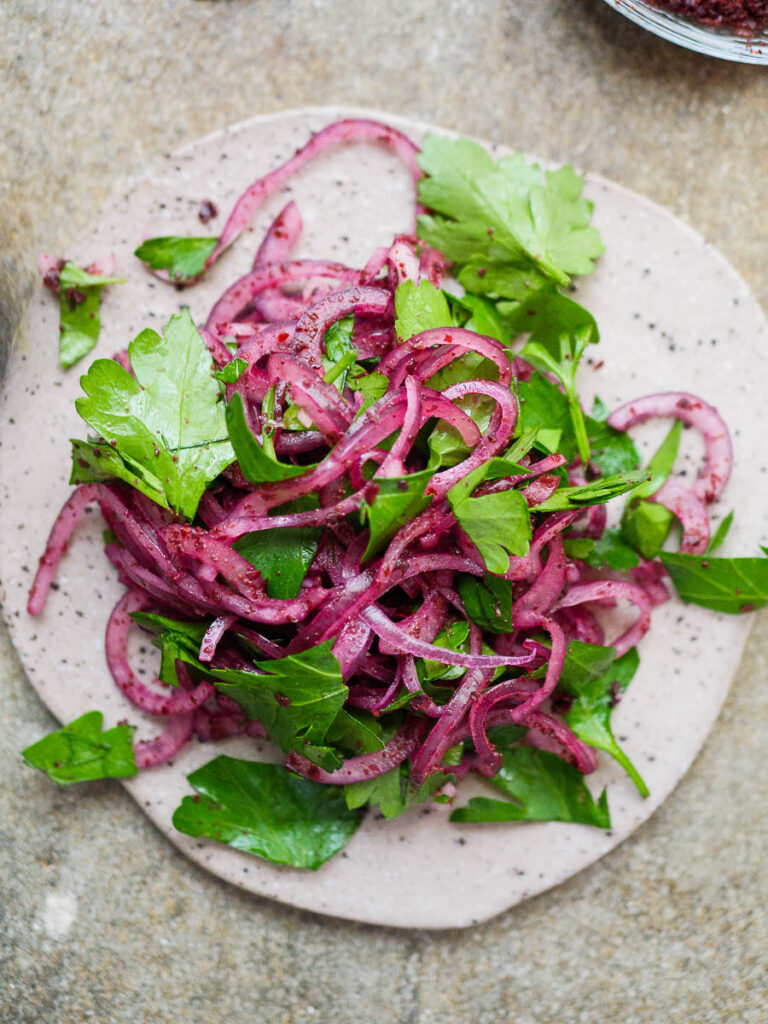
For a non-traditional variation, I sometimes mix in a few halved cherry tomatoes. Delicious with Turkish meatballs!
What is sumac?
Chances are you came here searching for sumac onions, so you probably know this already. But if you’re not familiar with sumac, I urge you to become so!
Sumac is a sour berry native to the Meditarranean and Middle East. Prior to the arrival of lemon, it was one of the main ways to add acidity to food in the region. Compared to lemon juice, sumac has a milder and more complex flavour, with hints of fruitiness in addition to the sour tang.
Sumac is usually used in powder form, made from dried sumac berries. If you get your hands on freshly ground sumac, you’ll find it to be fairly flaky (rather than completely powdered) and moist. Dried sumac berries can also be found whole, though their use is more limited.
I love using sumac in salads or in marinades. I find it goes particularly well with chicken.
Sumac onions in Turkish cuisine
In Turkey, the dish is usually just referred to as onion salad (soğan salatası) or onion salad with sumac (sumaklı soğan salatası).
Sumac onions are a mainstay at kebab restaurants, where you’ll either get it served as one of several small plates on the house, or on your plate alongside the kebab. Try stuffing a small piece of bread with a piece of your freshly grilled kebab and a little of the red onion salad. Delicious!
Turks also enjoy this onion salad alongside other rich or fatty foods, such as fried liver. I also like them alongside Turkish meatballs (recipe forthcoming), in which case I add a few halved cherry tomatoes as well (non-traditional!). With meatballs, though, an onion laden bean salad known as piyaz (recipe forthcoming) is a much more common side dish.
While perhaps less traditional, sumac onions are also great with lahmacun or pide.
This sumac onion recipe makes a small bowl, enough for 2-4 people.
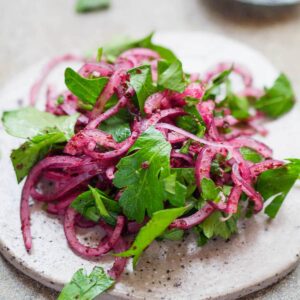
Turkish sumac onions
Ingredients
- 1 large red onion, halved and cut into thin slices
- 1 Tbsp sumac
- 1 Tbsp lemon juice
- 10 g flat-leaf parsley, leaves only, chopped
- salt
How I make it
- Rub the sumac, lemon juice and a little salt into the red onion until completely mixed and slightly softened. Set aside for 10-15 minutes.
- Mix with the parsley and serve immediately.


